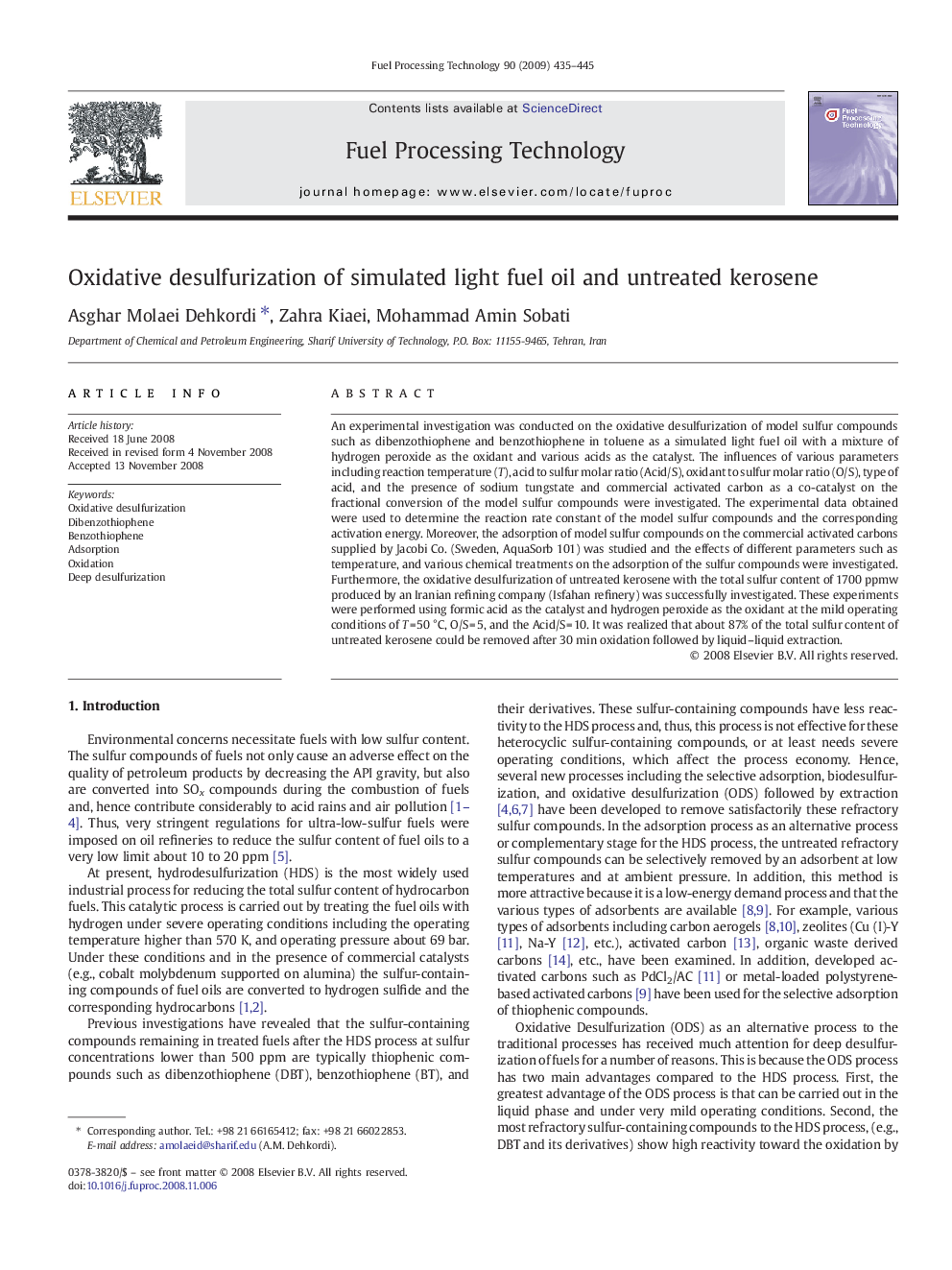| Article ID | Journal | Published Year | Pages | File Type |
|---|---|---|---|---|
| 211139 | Fuel Processing Technology | 2009 | 11 Pages |
An experimental investigation was conducted on the oxidative desulfurization of model sulfur compounds such as dibenzothiophene and benzothiophene in toluene as a simulated light fuel oil with a mixture of hydrogen peroxide as the oxidant and various acids as the catalyst. The influences of various parameters including reaction temperature (T), acid to sulfur molar ratio (Acid/S), oxidant to sulfur molar ratio (O/S), type of acid, and the presence of sodium tungstate and commercial activated carbon as a co-catalyst on the fractional conversion of the model sulfur compounds were investigated. The experimental data obtained were used to determine the reaction rate constant of the model sulfur compounds and the corresponding activation energy. Moreover, the adsorption of model sulfur compounds on the commercial activated carbons supplied by Jacobi Co. (Sweden, AquaSorb 101) was studied and the effects of different parameters such as temperature, and various chemical treatments on the adsorption of the sulfur compounds were investigated. Furthermore, the oxidative desulfurization of untreated kerosene with the total sulfur content of 1700 ppmw produced by an Iranian refining company (Isfahan refinery) was successfully investigated. These experiments were performed using formic acid as the catalyst and hydrogen peroxide as the oxidant at the mild operating conditions of T = 50 °C, O/S = 5, and the Acid/S = 10. It was realized that about 87% of the total sulfur content of untreated kerosene could be removed after 30 min oxidation followed by liquid–liquid extraction.
